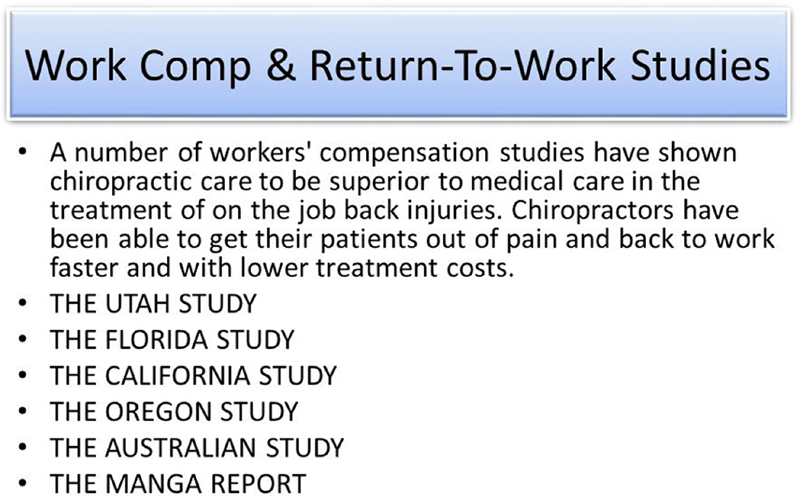Failure to Define Low Back Pain as a Disease or an Episode Renders Research on Causality Unsuitable: Results of a Systematic Review
SOURCE: Chiropractic & Manual Therapies 2017 (Jan 9)
Emad M. Ardakani, Charlotte Leboeuf-Yde and Bruce F. Walker
School of Health Professions,
Murdoch University,
90 South St,
Murdoch, WA 6150, Australia
Background Causative factors may be different for the very first onset of symptoms of the ‘disease’ of low back pain (LBP) than for ensuing episodes that occur after a pain-free period. This differentiation hinges on a life-time absence of low back pain at first onset and short-term absence for further episodes. In this systematic review, we explored whether researchers make these distinctions when investigating the causality of LBP.
Methods A literature search of PUBMED, CINAHL, and SCOPUS databases was performed from January 2010 until September 2016 using the search terms ‘low back pain’ or ‘back pain’ and ‘risk factor’ or ‘caus*’ or ‘predict*’ or ‘onset’ or ‘first-time’ or ‘inception’ or ‘incidence’. Two reviewers extracted information on study design, types of episodes of back pain to distinguish the disease of LBP and recurring episodes, and also to determine the definitions of disease- or pain-free periods.
Results Thirty-three articles purporting to study causes of LBP were included. Upon scrutiny, 31 of the 33 articles were unclear as to what type of causality they were studying, that of the ‘disease’ or the episode, or a mere association with LBP. Only 9 studies used a prospective study design. Five studies appeared to investigate the onset of the disease of LBP, however, only one study truly captured the first incidence of LBP, which was the result of sports injury. Six appeared to study episodes but only one clearly related to the concept of episodes. Therefore, among those 11 studies, nine included both first-time LBP and episodes of LBP. Consequently, 22 studies related to the prevalence of LBP, as they probably included a mixture of first-time, recurring and ongoing episodes without distinction.
There are more articles like this @ our:
Low Back Pain and Chiropractic Page
and the:
Conclusion Recent literature concerning the causality of LBP does not differentiate between the ‘disease’ of LBP and its recurring episodes mainly due to a lack of a clear definition of absence of LBP at baseline. Therefore, current research is not capable of providing a valid answer on this topic.
Keywords Low back pain, Cause, Risk factor, Onset, Incidence, Systematic review, Methodology
From the FULL TEXT Article:
Background
LBP in perspective
Low back pain (LBP) is a common musculoskeletal condition in the general population and one of the five most common causes of disability worldwide. [1] It accounts for a considerable amount of healthcare visits and treatments, which places a great burden on health budgets in many countries. [2] Hence, it has been a condition of attention among various professions, consumers, and policy makers in the healthcare sector. It is believed that most cases of LBP are non-specific [3, 4], in which no clear structural or anatomical cause can be identified.
Further, those with LBP at one point in time will have a strong tendency towards having continuing LBP or having it again, and those without LBP are unlikely to develop it. [5] In fact, it has been shown to be a chronic disease [6-9], characterised by a stable pattern of episodes [5], which may occur frequently or rarely [10] and these episodes may be of short or of long duration. [11, 12]
A search of the Cochrane library using the search term “low back pain” reveals many systematic reviews that conclude that no specific treatment has been found to be significantly superior in the management of non-specific LBP than others, or indeed, even better than placebo [13-20], indicating a need to initiate a shift in the research direction from treatment to prevention.
Read the rest of this Full Text article now!




Leave A Comment